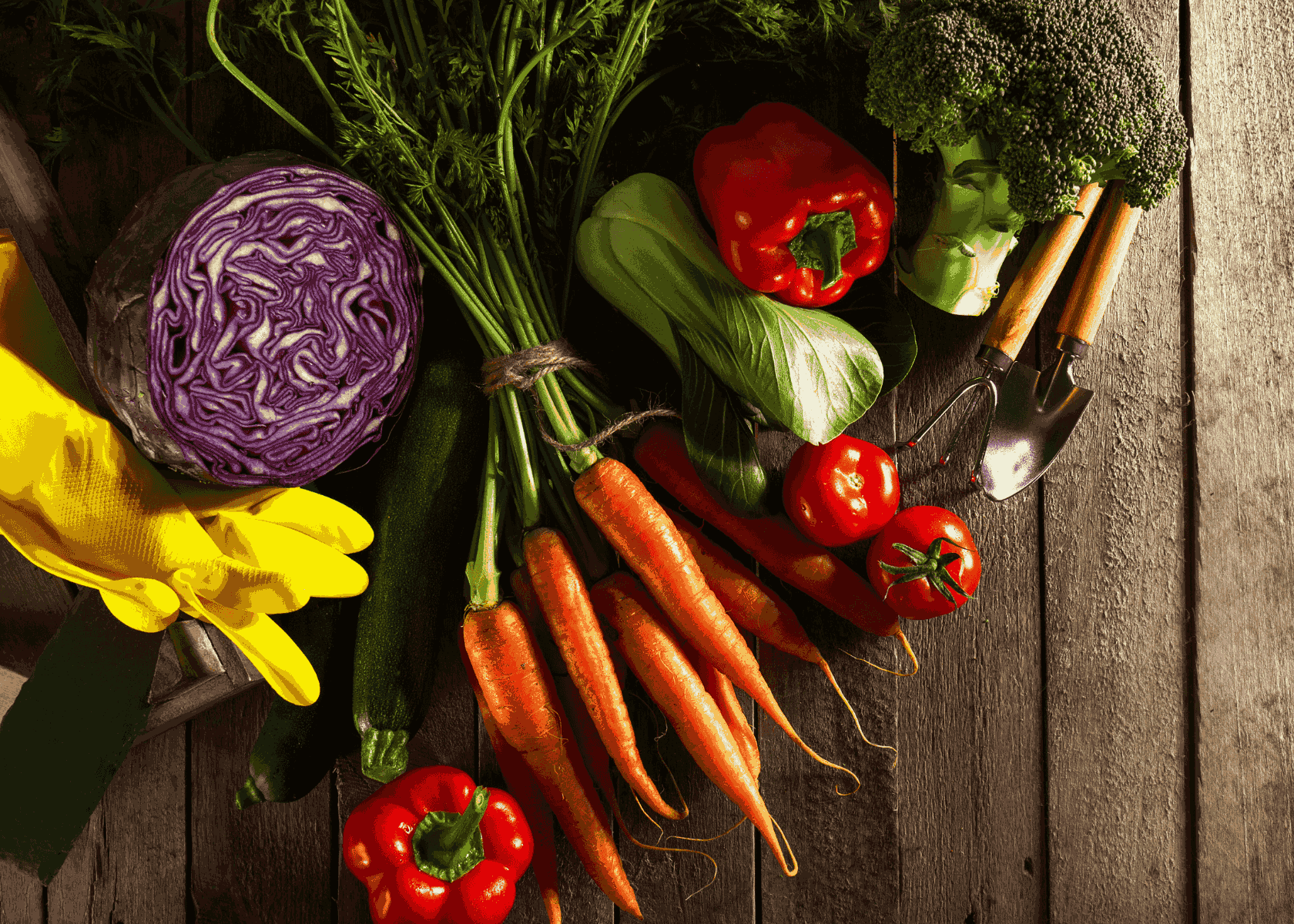Do you enjoy eating home-grown, fresh, organic vegetables? What you’re about to read may be surprising, but building a fantastic vegetable garden requires no rocket science.
We’re glad you landed here because we’re about to reveal the easiest and fastest vegetables to grow, specifically in cool climates. You only need a little knowledge of basic techniques, and nature takes over the rest!
Let’s have a look at our top 6 home-grown vegetables.
1. Carrots
Growing vibrant, crunchy carrots requires only 6-10 weeks and is a top choice for many home gardeners. You know, the taste of your ingrown carrots, showered with fresh water next to store-bought carrots, is incomparable.
Although it’s preferred to plant carrots in the cool season, the mid-summer season also supports this crop. Full sunlight and well-drained sandy soil enriched with organic matter like manure are essential for optimal growth. Nantes, a special carrot variant, is one of the easiest vegetables to grow in pots or containers as it doesn’t even require excessively deep soil.
2. Radishes
From tiny to big spicy ones and blood red colored to dark maroon ones, radishes are available in all sizes and colors. They’re a nurtured source of Vitamin C and grow best in cool climates.
Radishes are a great option for beginners and super fun to grow as they don’t require much maintenance. They mature rapidly and are ready to be harvested in 25-30 days.
However, keep your radish bed satisfied with consistent moisture to avoid saturation. This simple tip helps you enjoy a high yield.
3. Lettuce
Number three is children’s favorite, fresh, juicy lettuce! It is mostly grown in regions closer to the poles. This crop is great for beginners as it proliferates, doesn’t need much space, and requires little attention.
Choose well-draining soil that retains moisture well for the best development of your lettuce seeds. Ensure you’ve added enough organic matter to the soil and given it a considerable amount of time to set before sowing seeds.
For maintenance, keep soil temperatures cool during warmer months with adequate watering.
4. Green Beans
Green beans, or more commonly known as ‘snap beans,’ are a popular choice for home gardeners who enjoy growing them indoors. Unlike the vegetables mentioned above, green beans are preferably grown in warmer conditions or areas where the temperatures don’t drop too low. If you want maximum crop yield, it’s best to plant your green beans in late spring or early summer.
Best of all, they’re typically ready in 50-60 days. If you don’t want a compromised flavor and texture, avoid over-riping them and harvest them as soon as possible.
However, with beans, you must be mindful and look out for pests and insects regularly.
5. Bell Pepper
Eat it raw, grill it, or bake it; you can’t miss out on it! You’ll know it was worth the wait when you get a fresh one from your garden!
Well, bell peppers can grow without requiring extra effort and care. They’ll conveniently grow without much intervention if you provide them with 6-8 hours of sunlight daily. But hey, remember that they are sensitive to heat and should be watered regularly for best outputs.
Only after 60-90 days of planting are your fresh Bell Peppers all set to be harvested.
6. Peas
How could we miss out on peas? Packed with flavor and nutrients, this little pod can serve as a snack dish, salad ingredient, and a secret to vibrancy on your dinner table.
Peas grow in cool climates, like lettuce; however, they require the spotlight under the sun. Varieties such as ‘Sugar Snap‘ and ‘Oregon Sugar Pod‘ grow best in cool seasons. They may require support from a fence or terrace to grow, and it would be great if you could make arrangements for that before sowing seeds. Ensure that you water them adequately to maintain their sweetness.
Harvest them young and tender generally when you see the pod is the size of your finger and looks full.
Tips for Beginners
While growing these veggies might sound like a no-brainer, beginners often need help to get started. Here’s a run-down of some tips that can get you going with your gardening journey:
- Always look out for pests and diseases.
- Make sure your cultivation spot has great sunlight and ample water.
- For a greater output, don’t forget to go for high-quality seeds.
- It’s equally important to regularly check and monitor your crop growth to know when to harvest it.
- Don’t compromise on the quantity of organic mulch—it’s your go-to ingredient for retaining soil moisture and preventing weed development.
Conclusion
When it comes to gardening, it’s easy, pocket-friendly, and, on top of that, a free therapy session. It is an activity full of exciting events like cultivating, watering, and harvesting to look forward to.
Now that you know the top 6 easiest veggies to grow next, it’s time to start. If you’re a beginner, you should research gardening methods and seek professional help.
Happy gardening!







